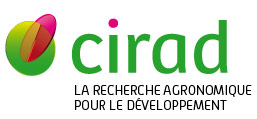Impact of alternative relative cane payment systems and harvest scheduling on growers revenues
Le Gal P.Y., PapaĂŻconomou H., Lyne P.W.L., Meyer E.. 2006. Sugar Cane International, 24 (1) : p. 14-20.
The Centre de coopĂŠration internationale en recherche agronomique pour le dĂŠvelopment, the South African Sugarcane Research Institute and the Sezela mill have since 2002 been conducting a collaborative research project into the potential benefits that could be expected from re-arranging cane supply scheduling based on the variation of quality patterns within the Sezela mill supply area. The supply area was split into three quality-based sub-areas determined by climatic conditions, and various harvest windows were allocated to each sub-area according to its specific recoverable value (RV) curve. Simulations of the mill's cane supply and the associated RV % cane showed gains ranging from 0.5 to 2.5%. A study was conducted in 2004 with the objective of investigating the relevancy of the current and alternative relative payment systems when distinctive supply sub-areas are defined with-in the mill supply area. Two alternatives to the current relative payment formula were designed and their impacts on growers' revenues were simulated. Alternative 1 switches the weekly RV average of the overall supply area with the weekly RV average of each sub-area. Alternative 2 considers each sub-area as a completely separate supply area. Simulations have shown that re-organising mill supply by separating subarea deliveries impacts differently on the growers' revenue, depending on the selected payment system. The current system and Alternative 1 both lead to RV transfer from Inland to Coastal, while Alternative 2 keeps RV revenue close to actual RV.
Mots-clĂŠs : canne Ă sucre; rĂŠcolte; industrie du sucre; fonction d'offre; revenu; simulation; afrique du sud
Article (b-revue Ă comitĂŠ de lecture)
